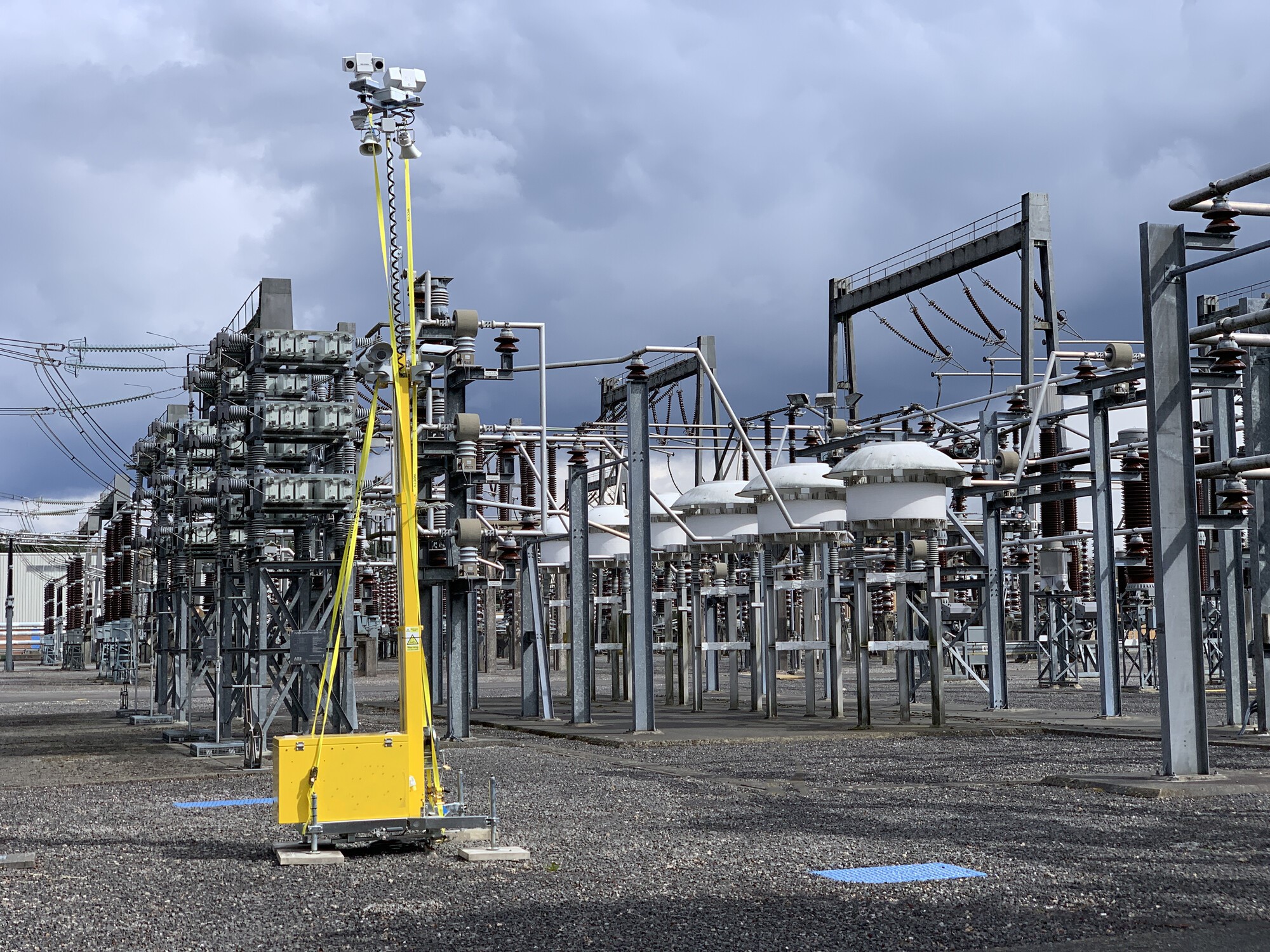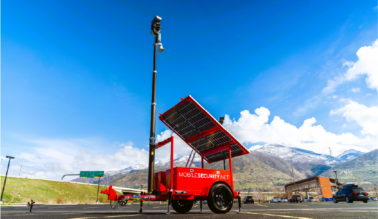Cellular Connectivity for the Energy Sector
by Nir Elron
The electricity grid is the backbone of the economy in most countries. Any disruption in power flow shows how vital it is to our everyday life; any blackout can have a domino effect, as it impacts communications, traffic, security, banking and other systems that modern society relies on.
The world’s electricity consumption has continuously grown over the past half a century. Between 1980 and 2022, it more than tripled, reaching approximately 25,500 terawatt-hours. In 2023, global electricity demand grew by 2.2% and is expected to rise at a faster rate over the next three years, growing by an average of 3.4% annually.
As demand grows, so does the grid. In 2023, the International Energy Agency reported that to meet demand, the world will need 80 million kilometers of new transmission lines before 2040 – an amount equal to the entire existing global grid.
However, such fast growth is not without its challenges. As local electricity grids grew over time, they eventually interconnected for economic and reliability reasons, but due to the wide variety of systems and their owners and a diverse range of regulators, several weaknesses have emerged in the energy sector. Outages were often recognized only after consumers reported it, and matching generation to demand was challenging, so energy providers had to over generate power for peak demand which was expensive and contributed to greenhouse gas emissions.
Trying to address these challenges, by the beginning of the 21st century energy companies started using smart meters and other electronic controls, metering and monitoring technologies to modernize their power networks and ensure energy supply stability and efficiency. By implementing all these new technologies, they soon turned their networks into sophisticated energy transmission and management systems that were called smart grids.
A smart grid is an electricity network that uses advanced technologies to monitor and manage the transport of electricity from all generation sources to meet the varying electricity demands of end users. It allows for more efficient transmission of electricity and quicker restoration after power disturbances and helps reduce operations and management costs as well as peak demands, to ultimately lower electricity rates for consumers.
While almost all industries are dependent on electricity, the smart grid is critically dependent on real-time data from smart meters, smart sensors and other IoT devices that provide insights on power generation, demand and distribution, as well as infrastructure performance and conditions. The lack of it may lead to inefficiencies, power outages, and security vulnerabilities. With this data, energy providers can monitor grid performance, energy consumption, and even predict maintenance needs in real time.
For the purposes of data gathering and transmission, systems control and management, a smart grid needs a stable and reliable means of internet connectivity. Cellular connectivity is an essential instrument for smart grid deployments, since they include many cellular enabled monitoring and control devices. Besides, for equipment deployed at remote locations, which oftentimes is the case with electrical grid, only cellular networks can ensure sufficient uptime and flexibility. Today, smart grids use cellular networks on every stage – generation, transmission and distribution – in all main operations.

Power Management
The smart grid’s two-way interactive capacity allows for automatic rerouting in case of peak demand, if equipment fails or when outages occur. It helps to minimize outages and their effects, detecting and isolating them, making it easier to contain system failures into smaller areas and prevent large-scale blackouts. It also helps to incorporate variable generation, such as wind and solar power, into the grid.
A smart grid can also help shape electricity demand according to the available capacity of production, transmission and distribution assets.
Many power lines go through rural and remote areas. Since running a data cable to any location, let alone a remote one, usually is expensive and time-consuming, cellular connectivity is a better option. Besides, the wired lines are vulnerable, and companies use cellular connection as a backup if they are damaged or destroyed.
Infrastructure Monitoring
Real‐time knowledge of system health through the use of smart grid technologies allows for fuller utilization of existing resources and enables networks to operate closer to their true limits without sacrificing reliability. By continuously monitoring the health of the grid, IoT devices can predict potential failures before they happen, and this type of predictive diagnostics allows for timely interventions, reducing both downtime and maintenance costs. Besides, using advanced monitoring and control equipment, the smart grid can reduce peak demand and thus prolong and optimize the use of the existing infrastructure.
But advanced monitoring is impossible without a stable internet connection. All meters and sensors need reliable connectivity, and only cellular networks can provide it literally anywhere. Cellular connectivity is also critical for other instruments that help monitor infrastructure, be it drones performing power grid inspections or autonomous robots that travel along power lines to detect and report potential issues before they become major problems.
Security
As the power grid serves as the backbone of many other verticals, both physical and information security are of utmost importance. It is critical since many power substations in the power grid are unmanned and located in isolated, remote, or rural areas. They are vulnerable to malicious physical attacks as the security personnel cannot reach these facilities easily. Physical intrusion attempts and events are not uncommon. Another threat to the electric grid is extreme weather events like wildfires, hurricanes, and deep freezes.
Being secure by design, cellular connection is resilient to cyber attacks, while in terms of physical security it allows for any applications, including video surveillance, even at remote locations.

Connectivity Requirements
Depending on the type of equipment and its role in the smart grid, connectivity requirements may vary, but there are some common demands that define the grid’s ability to provide stable power flow or ensure that electricity recovery resumes quickly in case of an emergency.
Reliability
Smart grid automation and remote SCADA systems require a highly reliable monitoring and controlling network, which, in turn, is dependent on reliable communications networks. It is crucial for a grid manager’s ability to, for example, pinpoint malfunctions and dynamically respond to outages.
Cellular networks are virtually everywhere, and usually there are several mobile operators in any region, which means that IoT devices can stay online even when one of the networks is down or the connection to it is unstable. Basically, this is the reason why cellular connectivity is often used as a backup even by devices connected to the fixed infrastructure.
Latency
In smart grids, there is a variety of latency requirements depending upon the grid type, architecture, technology, need, and application. Some applications like remotely controlling streetlights may have very relaxed latency, others like reading smart meters have slightly more stringent requirements, and applications like grid automation and voltage optimization must have ultra low latency. Latency is especially critical in mission critical applications such as fault detection and isolation, where quick response times are essential to prevent cascading failures.
Compliance with Regulations
In any country, there are legislative acts that regulate data collection and transfer, from strictly technical matters to data privacy and sovereignty. There may be local or use case specific regulations that need to be complied with, for example video surveillance. It may be especially important for smart grid operators, since these regulations may also include requirements regarding network access, consumer service, transmission and distribution licensees etc.

Webbing’s Solution
Webbing offers a connectivity solution that ensures global access to reliable and high-quality internet, with low latency and the best of class coverage. It provides secure and continuous internet connection, delivering a streamlined, centralized, and scalable means of deploying, controlling and monitoring IoT devices used in smart grid systems.
Webbing’s partner network of over 600 mobile operators worldwide guarantees global coverage. It allows IoT devices to roam on several carriers’ network in every region, solving the problem of weak spots that any mobile network may have and ensuring full coverage and continuous connectivity for all devices, even at remote locations.
Webbing is a global connectivity provider, with a distributed full-core network with local breakouts, multiple network solution, and data server redundancy that can provide connectivity stability and low latency. As such, Webbing’s network is well suited to support all types of use cases, including mission-critical and high-data consumption.
Combined with remote eSIM provisioning capabilities, our network can guarantee compliance with all local and regional connectivity regulation requirements – from IP traffic that remains in the country to local carrier profiles downloaded over-the-air (full localization).
Our eSIM solution is fully aligned with the GSMA SGP.32 IoT eSIM specification and supports the new IoT standard. It allows for remote provisioning and an automatic swap between multiple mobile carrier profiles as well as ensures failover connectivity with the option to fall back from a failing profile to a different profile without any need to communicate with a remote server.
Our solutions help enterprises overcome their connectivity problems and reduce time to market for global deployments, providing the benefits of roaming with multiple carrier options in every country, and seamless transition between carriers, while maintaining low rates and low latency on a global scale with a single SIM.
Reach out to [email protected] to learn more about Webbing’s solutions.




